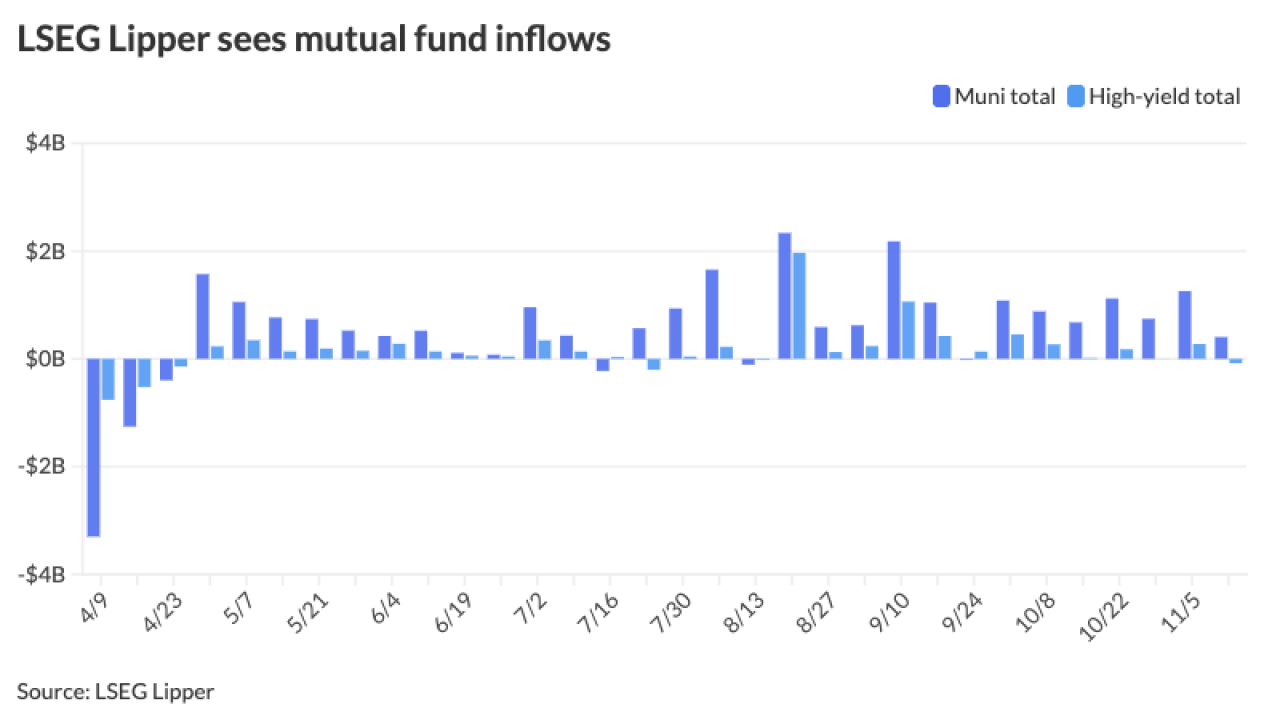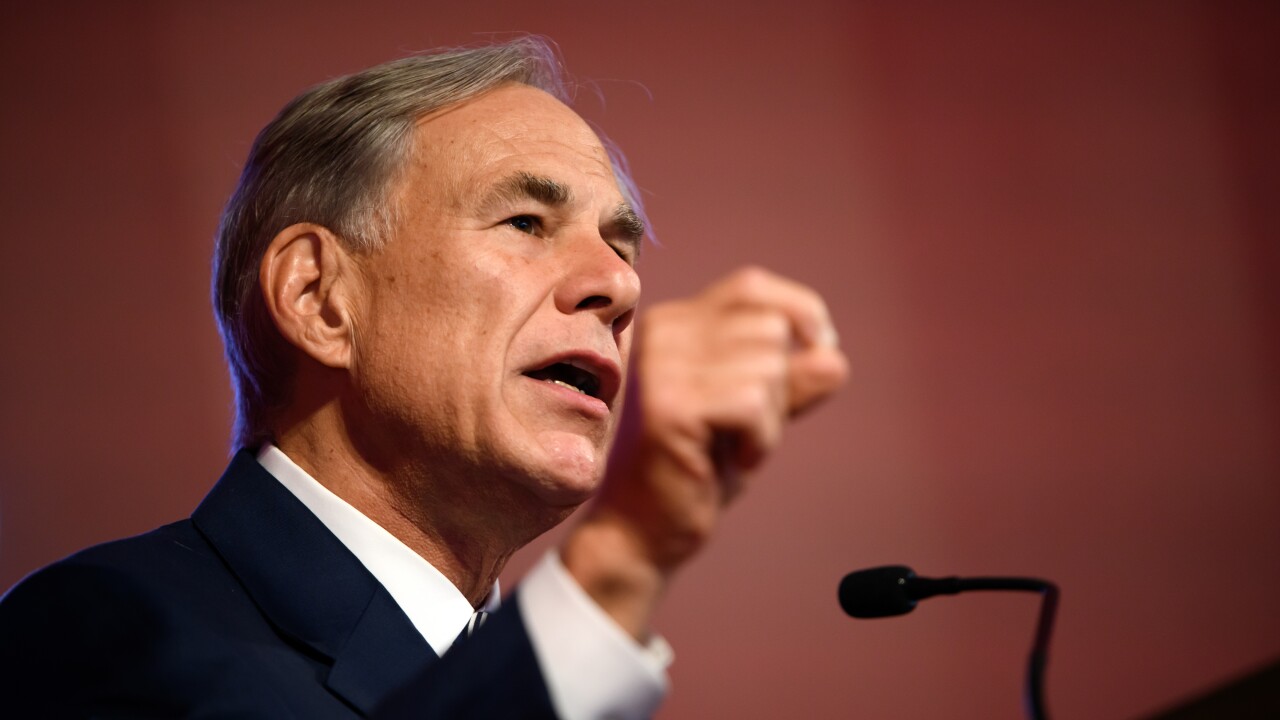The San Francisco Bay Area Rapid Transit District, facing continued steep pandemic-driven ridership declines, received a two-notch downgrade on its general obligation bonds from S&P Global Ratings, even as a bevy of state lawmakers plead with colleagues to include a transit rescue package in the budget.
BART's GO rating fell to A-plus from AA, but S&P affirmed the AA-plus ratings on its sales tax bonds. It also maintained a negative outlook on both, which according to Kurt Forsgren, an S&P managing director and the transportation sector lead, means there is a one-in-three chance more downgrades could be coming during the 12-to 24-month outlook period.
The downgrade "reflects BART's ongoing operational and fiscal challenges resulting from significantly depressed ridership combined with forecasts of sizable operating fund deficits of $300 million and $340 million beginning in 2025 when about $600 million in remaining federal assistance runs out," S&P analysts wrote in the June 1 report.

Before the pandemic, BART, which runs 131 miles of rail service touching five counties, relied on strong performance at the farebox to fund service. With ridership still down substantially, it faces a looming fiscal crisis when federal COVID relief funds run out.
Sen. Scott Wiener, D-San Francisco, and 35 other lawmakers delivered a letter Friday to Gov. Gavin Newsom and legislative leaders on behalf of the state's transit agencies. The letter came a day after Wiener and several other Democrats held a "call to action" press conference on transit funding.
Some lawmakers are doubling down on efforts to get financial aid for California's struggling mass transit agencies included as the June 15 state budget deadline draws near.
"As we approach our budget deadline, we continue to raise the alarm that our transit systems are at risk of severe service cuts if we don't provide a bridge," lawmakers wrote in the letter.
Trying to close a $31.5 billion deficit, Gov. Gavin Newsom's
The coalition led by Wiener is asking the governor to restore the lost infrastructure funding, and also allocate $1 billion annually for five years that transit agencies can use for operations to maintain service levels while they recover from the pandemic. The operations funding requested by lawmakers matches the $5.15 billion the California Transit Association requested in a letter to the governor and legislative leaders.
"Allowing the state's transit systems to unravel, as they continue to recover and try to stabilize operations from pandemic ridership declines, would have long-term, possibly irreversible, devastating impacts on California's transportation system and climate goals," Wiener said. "The resulting service cuts would lead to fewer mobility options for Californians, especially low-income transit-dependent riders, and increased driving, congestion and green-house gas emissions."
Lawmakers' letter asked the governor and legislative leaders Sen. Toni Atkins, D-San Diego, and House Speaker Anthony Rendon, D-Lakewood, to work with lawmakers to craft an agreement to reverse the $2 billion proposed reductions and provide transit operations bridge funding.
The letter describes a death spiral where transit agencies are forced to make service cuts that result in a further decline in ridership and lowered revenues, leading to further service cuts. The shortfalls could also result in some transit agencies increasing fares or slowing down needed capital projects, putting the state's ability to qualify for "once-in-a-generation federal transit infrastructure funds" at risk, according to the letter.
"Other states, like Minnesota and New York, have addressed this. We need to do something so we don't end up in a doom loop," Assemblymember Buffy Wicks, D-Oakland, said at a press conference. "My district is dependent on public transportation. Our housing policy was predicated on the idea of housing and transit working together."
Shrinking transit service would also impact the state's climate change goals, Wicks said, "as 45% of pollution comes from our tailpipes. We don't want to increase that."
The money is needed to deal with "pandemic-induced operating deficits that threaten transit service and jobs statewide," according to Michael Pimentel, the California Transit Association's executive director.
"We find that these operating deficits stem from a variety of factors impacting agencies nationwide, including the depletion of federal emergency relief funding the increased costs of transit operations resulting from a tight labor market and historically high fuel and energy costs; the increased costs of capital projects, resulting from inflation and supply chain issues; and a slower-than-anticipated recovery in ridership caused by the prevalence and endurance of remote work and the advent of new public safety concerns," Pimentel wrote.
BART's two-notch downgrade underscores the pressures on California transit.
"We changed the outlook in September to negative on BART's general obligation bond obligations," said Kurt Forsgren, an S&P managing director and transportation sector lead. "We did that in recognition of the focus on operating performance and the uphill battle to regain ridership."
There is no question the pandemic took a toll on transit ridership, driving work-from-home or hybrid arrangements for office workers, and pushing other riders into private cars amid fears of contagion and on board public safety concerns. And BART, with its dependence on farebox revenues, versus sales or property taxes, is more exposed than other transit agencies.
In May,
"BART is one of the systems in the country that more heavily relied on funding for operating systems from fares, compared to others like LA Metro that have more of a tax base that support operations," Forsgren said.
Moody's Investors Service revised its outlook on mass transit to negative in November, citing the looming $70 billion federal aid cliff, soft ridership recovery, inflation-induced wage pressures and uncertain tax revenue conditions in 2023. S&P in January also assigned a negative sector outlook.
"The district certainly is concerned about how its G.O. bonds and sales tax revenue bonds are evaluated by the rating agencies and investors," said James Allison, a BART spokesman.
He noted that when BART sold $700 million in Series 2022D GO bonds in May, Moody's and Fitch Ratings assigned Aaa and AAA ratings, respectively.
The general obligation bonds are secured by a voter-approved unlimited ad valorem property tax levied on all taxable properties within Alameda and Contra Costa counties and the City and County of San Francisco.
"The above-average legal strength of the general obligation bonds, including a statutory lien and 'lock box,' is credit positive," Moody's wrote in its March analysis.
The "district's GO Bonds are analogous to the county, city and school district GO Bonds in California backed by ad valorem property taxes," Allison said.
Allison says BART has been affected by S&P's change to its transportation sector methodology to in 2020.

The rating agency downgraded BART GO bonds to AA from AAA in March 2021, citing in part "the application of our updated criteria 'Global Not-For-Profit Transportation Infrastructure Enterprises.'"
BART didn't ask S&P to rate its Series 2022D bonds.
"BART, like other transit agencies nationwide that are reliant on farebox revenues, has begun to adjust post-pandemic, but the absolute dollar requires a realization that these agencies, including BART, are in the process of changing their funding model," Allison said.
BART's sales tax revenue bonds are paid by a first lien on 75% of the .5% BART sales and use tax levied in the three BART counties, according to Fitch's April ratings report.
Though Fitch rates the GO bonds AAA, it assigns BART its AA issuer default and sales tax revenue ratings, with negative outlooks. Fitch
The AAA rating and stable outlook Fitch assigned to the GOs "is based on a dedicated tax analysis and reflects Fitch's assessment that the pledged revenues for repayment of the GO bonds meet the definition of "pledged special revenues" under the U.S. Bankruptcy Code," its ratings report said.
Fitch's negative issuer default and revenue bond outlook "highlights the uncertainty surrounding future ridership and BART's ability to close resulting out-year budget gaps once federal funding runs out."
BART is projecting "pretty sizeable deficits," after the federal funding runs out in March 2025, and it doesn't have a solution to fill the projected gaps, S&P's Forsgren said.
What merits further concern for S&P is that BART's ridership numbers were trending down slightly pre-pandemic, Forsgren said.
"BART is just not seeing the recovery that other systems are," Forsgren said. "We felt that it was time to reflect that in our ratings."
BART hasn't announced plans to issue bonds in its preliminary budget for fiscal year 2024-25, Forsgren said. It has more than $1.4 billion of authorization remaining from its voter-approved $3.5 billion bond measure of 2016, according to its most recent official statement.





